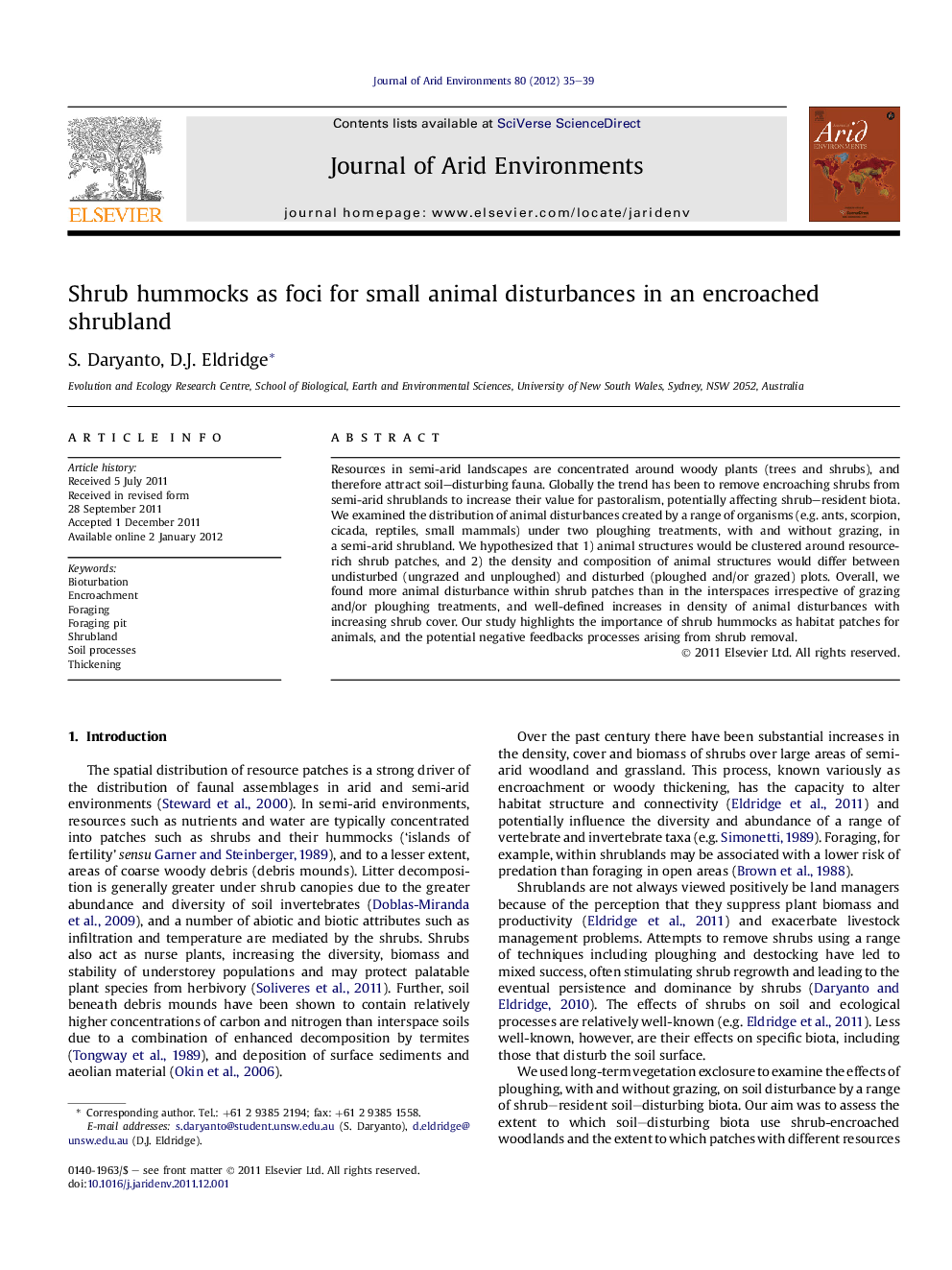| Article ID | Journal | Published Year | Pages | File Type |
|---|---|---|---|---|
| 4393385 | Journal of Arid Environments | 2012 | 5 Pages |
Resources in semi-arid landscapes are concentrated around woody plants (trees and shrubs), and therefore attract soil–disturbing fauna. Globally the trend has been to remove encroaching shrubs from semi-arid shrublands to increase their value for pastoralism, potentially affecting shrub–resident biota. We examined the distribution of animal disturbances created by a range of organisms (e.g. ants, scorpion, cicada, reptiles, small mammals) under two ploughing treatments, with and without grazing, in a semi-arid shrubland. We hypothesized that 1) animal structures would be clustered around resource-rich shrub patches, and 2) the density and composition of animal structures would differ between undisturbed (ungrazed and unploughed) and disturbed (ploughed and/or grazed) plots. Overall, we found more animal disturbance within shrub patches than in the interspaces irrespective of grazing and/or ploughing treatments, and well-defined increases in density of animal disturbances with increasing shrub cover. Our study highlights the importance of shrub hummocks as habitat patches for animals, and the potential negative feedbacks processes arising from shrub removal.
► Shrubs provide essential habitat for a range of soil–disturbing animals. ► Animal disturbances were clustered around shrubs and their hummocks. ► Grazing or shrub removal by ploughing did not influence the composition of hummock-resident organisms. ► Shrub removal is likely to reduce populations of soil–disturbing animals.
